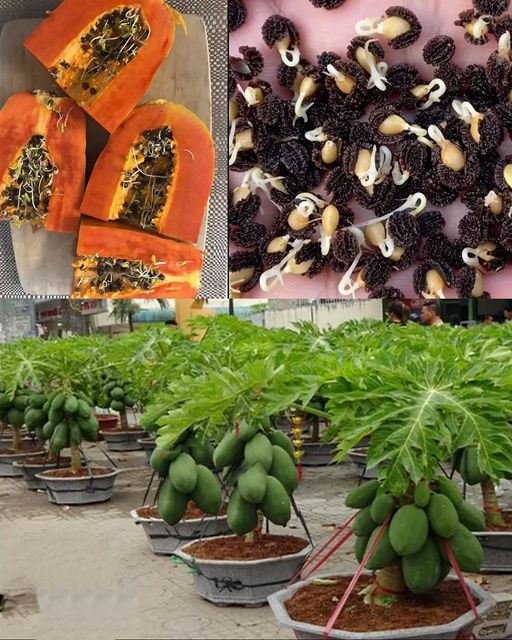The procedure for planting involves planting the sprouted seeds with care, making sure that the top of the root ball is aligned with the surface of the soil.
Maintaining a minimum space of ten feet between plants in order to allow for unfettered development is an essential component of adequate spacing.
Important Maintenance for Papaya Plants
The following key care guidelines will ensure that your papaya trees are in the best possible condition and will produce the most fruit:
sunshine Requirements Papayas are the most successful when grown in direct sunshine, and they need at least six hours of direct exposure each day.
Watering Routine: Maintain a steady moisture level in the soil while preventing waterlogging. When the top inch of soil seems dry, use a thorough watering technique.
The Routine of Fertilization: It is recommended to apply a balanced or fruit-specific fertilizer every two to four weeks during times of vigorous development.
The practices of pruning include shaping the plant and pruning the undesirable foliage on a regular basis in order to encourage strong development.
Taking precautions against pests involves keeping a close eye out for harmful organisms like aphids and using organic remedies when they are required.
When the plant reaches maturity, it is important to provide it with stakes or supports in order to prevent it from bowing under the weight of the fruit.
Obtaining Papayas from Homegrown Plants
In six to nine months, you will see the fruits of your labor. Papayas are ready to be harvested when they become yellow or orange, and they are removed from the stem by gently twisting them.
The cultivation of papayas in containers is a satisfying experience that, regardless of the size of the garden, results in the production of domestically produced, fresh food. A average lifetime of four to six years, it is important to prepare for replanting in order to guarantee continual harvests. I hope your gardening endeavors are fruitful and successful!

